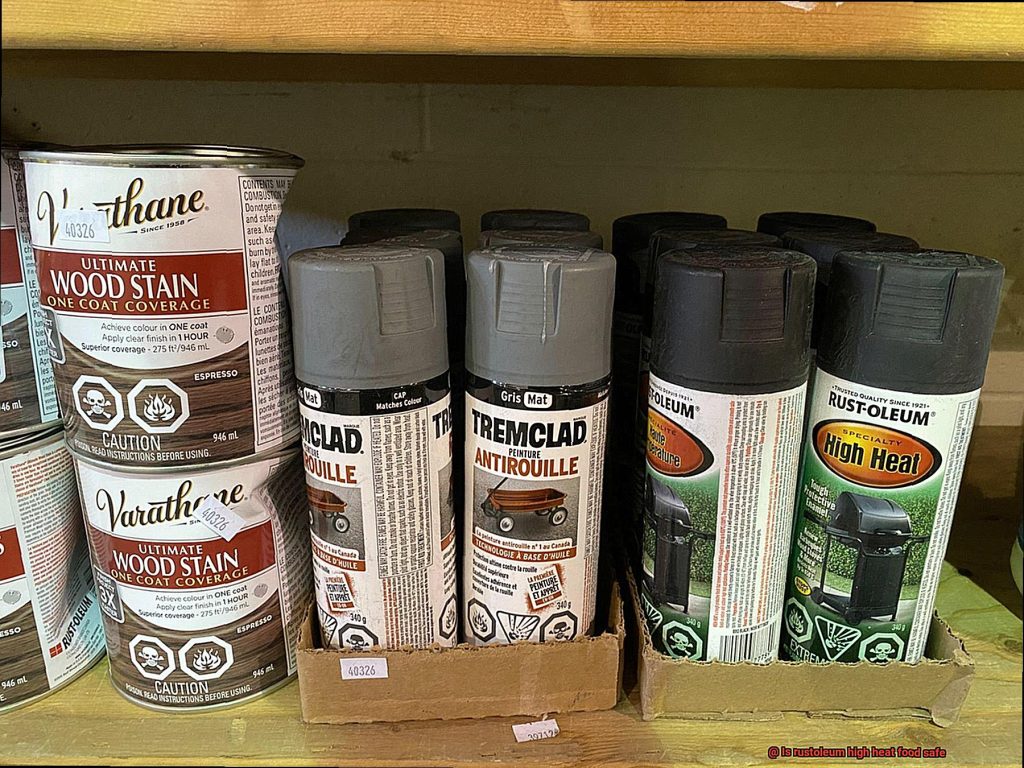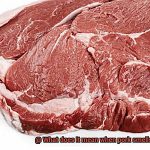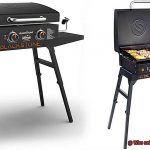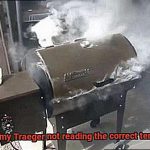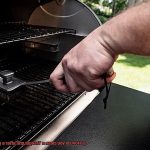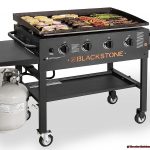Welcome to the sizzling world of high heat cooking and the safety concerns that come with it. As a food enthusiast, you may be wondering if Rust-Oleum high heat paints are food safe. It’s a question that every home cook and barbecue king should have an answer to.
Imagine this: You’ve spent hours perfecting your slow-cooked brisket, and as you lift the lid to your smoker, you’re met with a rusty, unsightly surface. That’s where high heat paints come in – designed to withstand the extreme temperatures of outdoor cooking. But with food safety always on our minds, how can we ensure these paints are safe for surfaces that come into contact with our food?
In this blog post, we’ll take a deep dive into the world of high heat paints and explore whether Rust-Oleum high heat paint is food safe. We’ll investigate different products available, their specific uses, and ingredients used in them. Whether you’re a seasoned grill master or just starting out in the kitchen, keep reading to discover everything you need to know about high heat paints and their safety when it comes to food.
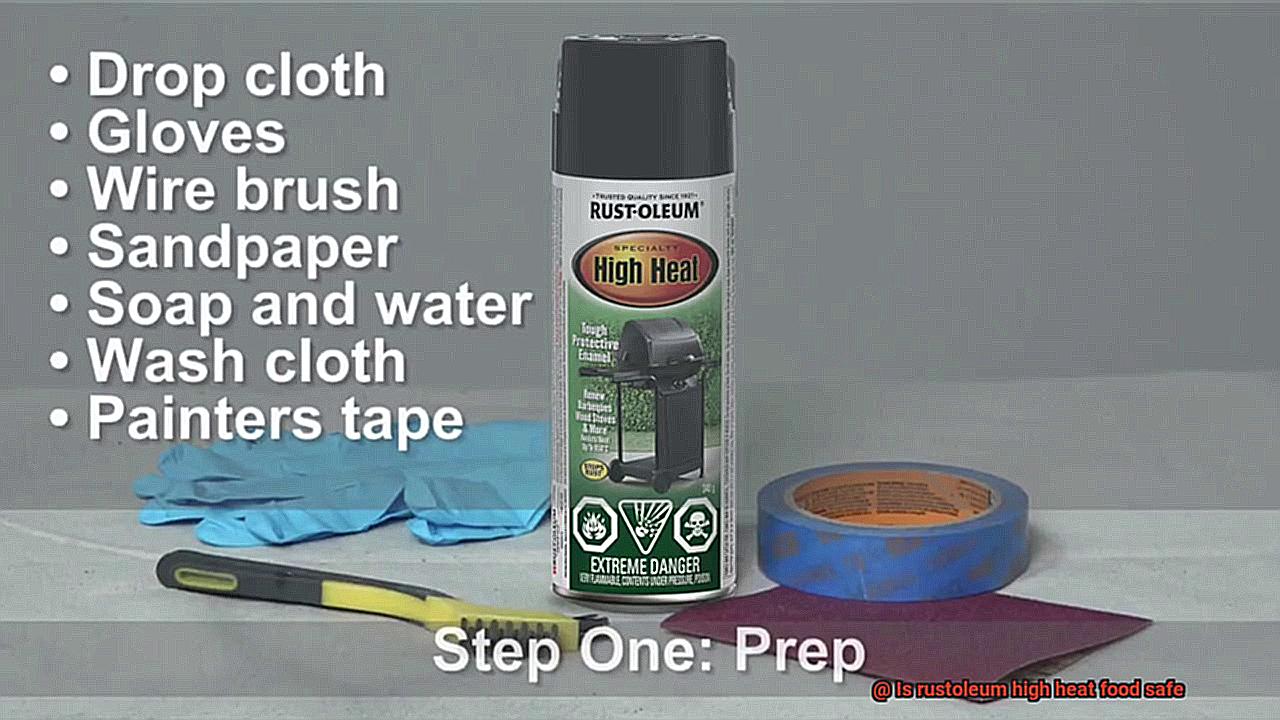
Contents
What is Rustoleum High Heat?
Rustoleum High Heat can do just that and more.
This specialized enamel paint is designed to resist chipping, cracking, and fading when exposed to temperatures of up to 1200°F. It comes in a variety of colors and finishes, including matte, satin, and gloss, making it a versatile option for a range of surfaces such as grills, fire pits, and exhaust systems.
Not only does Rustoleum High Heat offer aesthetic benefits, but it also provides protection against rust and corrosion. This is especially important for outdoor cooking equipment that is exposed to moisture and other environmental factors that can cause damage over time.
Rustoleum High Heat is compatible with metal, ceramic, and masonry surfaces, making it an excellent choice for a wide range of applications. However, it should be noted that this paint should not be used on cooking surfaces or utensils that will come into direct contact with food.
Is Rustoleum High Heat Food Safe?
While Rustoleum High Heat can handle temperatures up to 1200°F, it’s not designed for consumption. The product doesn’t have a specific food-safe label, which means that it may not be safe for surfaces that come into direct contact with food.
One primary concern with using Rustoleum High Heat around food is the possibility of chemical leaching. If the paint isn’t cured correctly or comes into direct contact with food, chemicals from the paint could potentially leach into the food. This could be hazardous if toxic chemicals are present in the paint.
To avoid any potential health risks, it’s recommended to use Rustoleum High Heat on non-food contact surfaces only. This includes the exterior of grills and fire pits, as well as other outdoor cooking appliances. If you need to paint a surface that will come into direct contact with food, choose a product that has a specific food-safe label.
Potential Hazards of Using Rustoleum High Heat on Food Surfaces
While the idea may seem convenient, it is essential to take into account the potential hazards before proceeding.
One of the most significant hazards of using Rustoleum High Heat on food surfaces is the risk of chemical contamination. The paint contains chemicals that can seep into your food when it comes into contact with the painted surface. This can cause a range of health problems such as headaches, gastrointestinal issues, and other symptoms.
Another potential hazard is physical contamination. If the paint begins to chip or peel off, it could end up in your food and pose a choking hazard or cause injury to your digestive system.
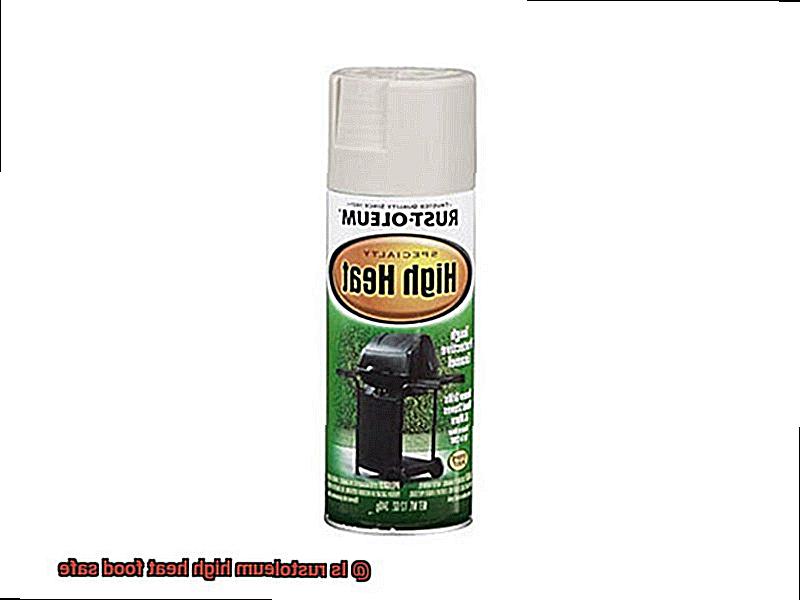
Additionally, using Rustoleum High Heat on food surfaces could potentially violate food safety regulations. The FDA has strict guidelines for materials that come into contact with food, and using a paint that is not specifically approved for this purpose could result in fines or legal action.
To avoid these hazards, it is best to opt for materials that are specifically designed and approved for use with food. This will ensure safety and compliance with regulations. Here are some examples of approved materials:
- Stainless Steel: This material is an excellent choice for grills and other cooking surfaces because it is durable and easy to clean.
- Ceramic Coating: Ceramic coatings are safe for use with food because they do not contain harmful chemicals.
- Heat-resistant Paint: Heat-resistant paints that are explicitly designed for use on food surfaces are a safer alternative to Rustoleum High Heat.
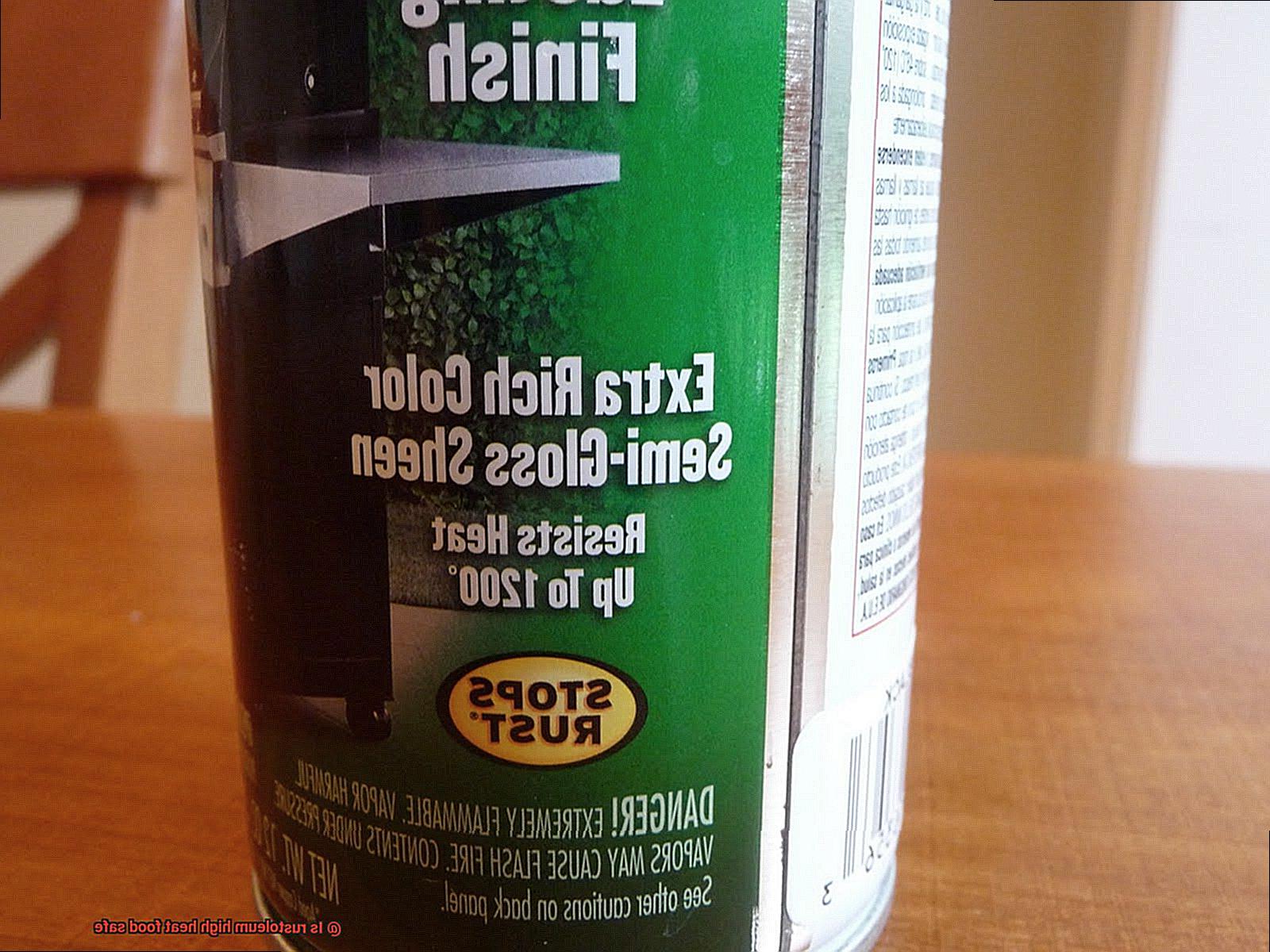
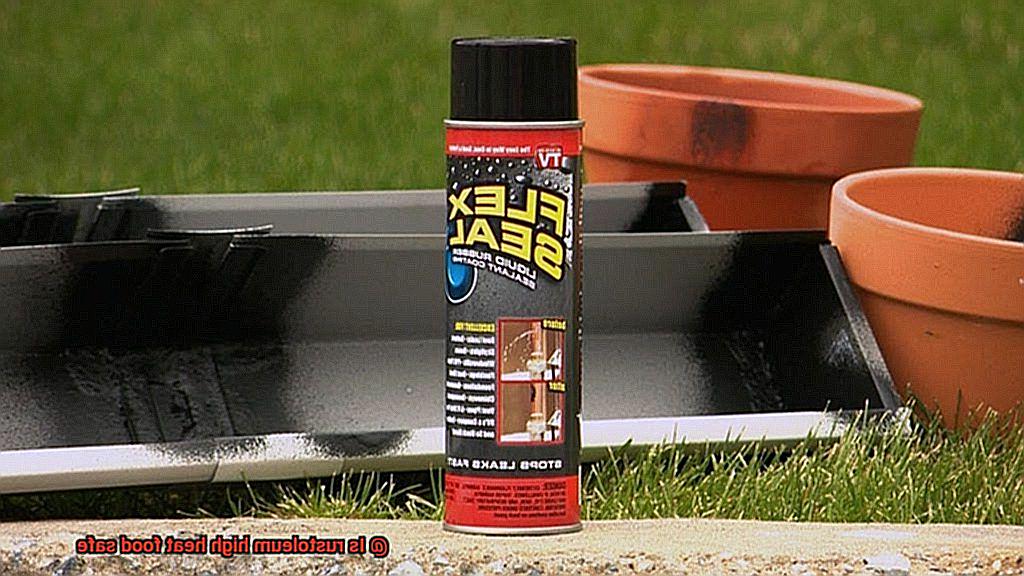
Alternatives to Rustoleum High Heat for Food Surfaces
Although Rustoleum is a popular option for high-temperature surfaces, it raises several concerns when used on food surfaces. Fortunately, there are several alternatives that can be used to ensure the safety of food surfaces.
One of the best options is ceramic coatings. Ceramic coatings are made from inorganic materials that can withstand high temperatures without releasing any harmful chemicals. They are non-porous, which means that bacteria cannot grow on them, making them an excellent choice for food preparation areas. Moreover, they come in a range of colors and finishes, providing versatility for painting food surfaces.
Another alternative is food-grade epoxy paint, designed explicitly for surfaces that will come into contact with food. This type of paint is made from materials that are certified safe for use in food preparation areas and can withstand high temperatures without flaking or peeling. Its array of colors and finishes makes it an ideal option for painting grills, smokers, and other high-temperature surfaces.
Heat-resistant silicone paint is yet another substitute for Rustoleum High Heat that can be used on food surfaces. This type of paint is designed to withstand high temperatures without cracking or peeling and is safe for use on surfaces that will come into contact with food. Its variety of colors and finishes make it an excellent choice for painting food surfaces as well.
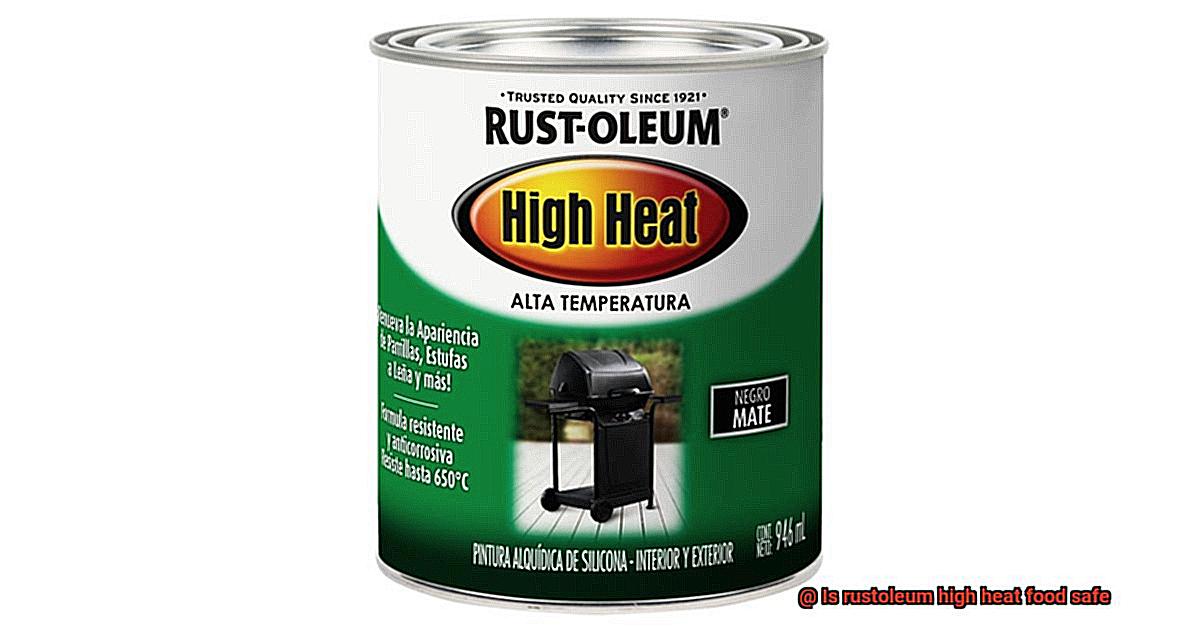
How to Safely Use Rustoleum High Heat on Grills and Other Cooking Surfaces
Grilling is a beloved summer pastime, but with frequent use, your grill can become rusty and worn. Rustoleum High Heat is a popular choice to restore grills and other cooking surfaces, but it’s essential to use it safely. Here are five sub-sections explaining how to safely use Rustoleum High Heat on grills and other cooking surfaces.
Follow the Manufacturer’s Instructions
It’s critical to read and follow the manufacturer’s instructions when using Rustoleum High Heat. This includes wearing protective gear such as gloves, goggles, and a mask when applying the product. Additionally, make sure that you’re working in a well-ventilated area to avoid inhaling any fumes.
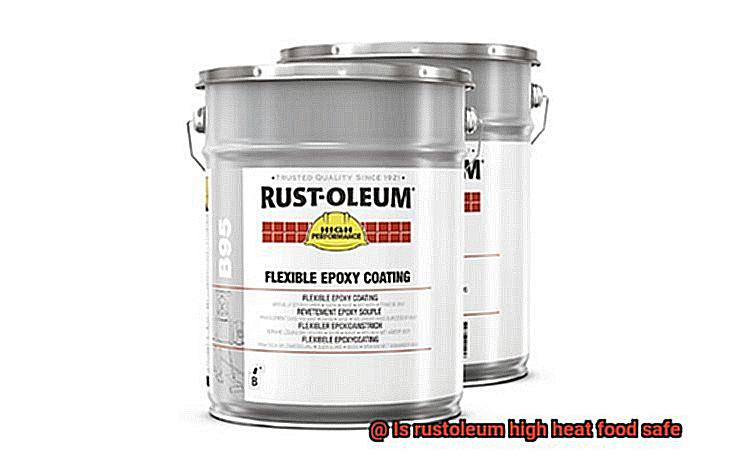
Do Not Apply Directly on Food Contact Surfaces
Although Rustoleum High Heat is designed for high temperatures, it’s not food safe. Therefore, it should only be applied to the exterior of the grill or surface, never inside where food will come into contact with it. When using this product, make sure that it doesn’t come into direct contact with any food.
Thoroughly Clean the Surface Before Applying
Before applying Rustoleum High Heat, it’s crucial to clean the surface thoroughly. This will help the product adhere better and provide a more even finish. Use a degreaser or soapy water to remove any dirt, grime, or rust from the surface.
Apply a Thin Coat and Allow Time to Cure
When applying Rustoleum High Heat, apply a thin coat using a high-quality brush or roller. Avoid applying too thick of a coat, as this can cause the paint to crack or peel over time. After application, allow the surface to cure completely before using it again. The curing process can take several hours or even several days depending on the temperature and humidity levels in your area.
Monitor for Chipping or Peeling
To prevent contamination of your food, it’s crucial to monitor the painted surface for any chipping or peeling. If you notice any damage, remove the entire coating and reapply a fresh coat. This will ensure that your cooking surface remains safe for use.
Cleaning and Maintenance After Applying Rustoleum High Heat
You’ve successfully applied Rustoleum High Heat to your grill and it’s looking better than ever. However, it’s important to remember that proper cleaning and maintenance is crucial for ensuring the safety of your food. Don’t worry though, we’ve got you covered with these simple steps.
Firstly, patience is key. Waiting at least 24 hours before using the painted surface for cooking is essential. This allows the paint to fully cure and harden, preventing any potential flaking or chipping. After all, we want our meals to be delicious and safe.
When cleaning your newly painted grill, avoid harsh chemicals or abrasive materials that could damage the paint. Instead, opt for a mild soap and warm water solution and gently clean the surface. Remember not to scrub too hard, as this can damage the paint and affect its longevity.
Regular inspections are also important to ensure that the painted surface remains intact. Check for any signs of wear or damage, such as flaking or chipping. If any damage is found, repair it immediately to prevent contamination of food.
To summarize, here are some tips for cleaning and maintaining a surface painted with Rustoleum High Heat:
- Wait at least 24 hours before cooking on the painted surface
- Use a mild soap and warm water solution when cleaning
- Avoid using harsh chemicals or abrasive materials
- Regularly inspect the painted surface for signs of wear or damage
- Repair any damage immediately
Pros and Cons of Using Rustoleum High Heat on Cooking Surfaces
This type of paint may provide a durable and long-lasting finish that is resistant to high temperatures, making it ideal for outdoor grills and other cooking equipment. Additionally, it can help protect your surfaces from rust and corrosion, which is particularly important for those living in humid areas or near the ocean.
However, there are some potential concerns to keep in mind when using Rustoleum High Heat. One of the major issues is whether or not it is food safe. While the paint is formulated to be heat-resistant, there is a possibility that it could contain chemicals that could leach into your food when heated.
Another potential downside is the strong odor that some users have reported when first applying Rustoleum High Heat. This could be unpleasant or even harmful if inhaled, so proper ventilation during application is crucial.
In addition, Rustoleum High Heat may not adhere well to certain surfaces, which could lead to peeling or flaking over time. This can be prevented by properly preparing the surface before application and ensuring that it is clean and free of any debris.
Ultimately, the decision to use Rustoleum High Heat on cooking surfaces comes down to weighing the potential benefits and risks. If you decide to proceed with using this paint, it’s important to wait 24 hours before cooking, use gentle cleaning solutions, avoid harsh chemicals or abrasive materials, regularly inspect the painted surface, and repair any damage immediately to prevent contamination.
Conclusion
In summary, Rustoleum High Heat is a top-notch solution for safeguarding and refurbishing outdoor cooking gear against rust, corrosion, and high temperatures. However, it’s important to keep in mind that this paint is not food safe and should never be applied directly on surfaces that come into contact with food. The potential risk of chemical leaching and physical contamination underscores the need to use approved materials for food surfaces such as stainless steel, ceramic coating, or heat-resistant silicone paint.
If you opt to use Rustoleum High Heat on non-food contact surfaces like grills or fire pits, it’s crucial to adhere strictly to the manufacturer’s instructions. This includes wearing proper protective gear during application, thoroughly cleaning the surface before painting, applying a thin layer of paint and allowing ample time for curing before using the surface again.
To ensure the safety of your painted surface, proper cleaning and maintenance are also vital. Use mild soap and warm water solutions when cleaning while avoiding harsh chemicals or abrasive materials that could damage the paint. Regularly inspect the painted surface for any signs of wear or damage and promptly address any issues to prevent contamination.

